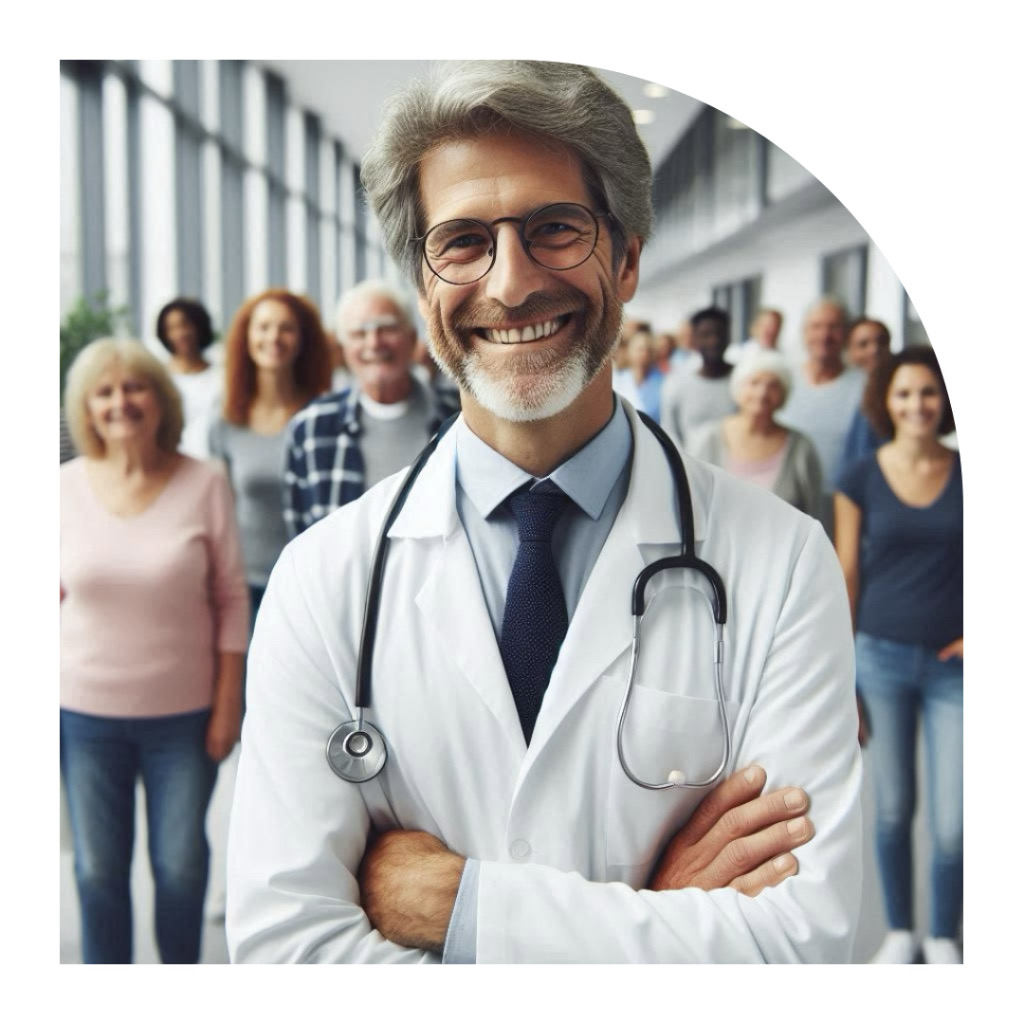The Invisible Threat: Unraveling Antibiotic Resistance
Antibiotic resistance emerges as a complex interplay between microbial adaptation and human activity, evolving silently yet assertively into a formidable challenge for modern medicine. At its core, this phenomenon results from the relentless survival instincts of microscopic organisms. These bacteria, facing the existential threat of antibiotics, undergo genetic mutations or acquire resistance genes from their environment, enabling them to withstand pharmaceutical onslaughts. Consequently, what was once a straightforward treatment now morphs into a fraught battle against increasingly resilient pathogens. This dynamic underscores a disturbing reality: the tools once hailed as magic bullets are gradually losing their efficacy, heralding an era where simple infections could once again become deadly.
The genesis of antibiotic resistance is intricately linked to the very essence of bacterial life - rapid reproduction and genetic diversity. Each cycle of antibiotic exposure acts as a selective pressure, an environmental challenge through which only the fittest - the resistant ones - survive and multiply. This Darwinian principle in microcosm is accelerated by the global dissemination of resistant strains, facilitated by human mobility and the interconnectedness of health systems. The result is a pervasive spread that recognizes no borders, transforming individual cases of resistance into a worldwide public health menace.
| Key Factor | Description |
|---|---|
| Genetic Mutations | Bacteria develop changes in their DNA that confer resistance against antibiotics. |
| Horizontal Gene Transfer | Resistant bacteria share their survival genes with other bacteria, even of different species. |
| Selective Pressure | The use of antibiotics kills susceptible bacteria, leaving resistant strains to thrive and multiply. |
| Global Spread | Travel and trade facilitate the worldwide distribution of resistant bacteria. |
Addressing antibiotic resistance demands a nuanced understanding of its biological underpinnings and societal drivers. The indiscriminate prescription and consumption of antibiotics, compounded by inadequate regulation in many parts of the world, fuel the flames of resistance. Moreover, the widespread use of these drugs in agriculture exacerbates the problem, introducing resistant bacteria into the human food chain. This intricate tapestry of causes renders the battle against antibiotic resistance a multifaceted challenge, demanding concerted action across disciplines and national boundaries. In the quest to preserve the efficacy of antibiotics, the global community is thus called upon to navigate this complex terrain with both urgency and care.
Misuse and Overuse: Fueling the Resistance Fire
The gravitation toward antibiotics in the modern world as a panacea for infections has inadvertently stoked the fires of drug resistance. At the heart of this conundrum lies a blatant misuse and overuse of these critical medications. Across the globe, antibiotics are often prescribed for viral infections against which they harbor no effect, contributing significantly to the burgeoning problem. Such indiscriminate application not only renders these drugs less effective but also encourages the emergence of formidable pathogens that can evade current medicinal arsenals.
Delving deeper, the overuse of antibiotics in the agricultural sector exacerbates the dilemma. Livestock are frequently administered antibiotics not only to treat infections but also as growth promoters, a practice that has become a pivotal factor in the propagation of resistant bacterial strains. These bacteria can then transfer from animals to humans through various channels, further complicating the landscape of resistance. The result is a cyclical escalation where antibiotics become progressively less effective, and the search for viable alternatives becomes more desperate.

The scientific context underpinning this issue is complex and multifaceted. It involves understanding the mechanisms by which bacteria adapt and evolve in the face of antibiotic exposure. Through horizontal gene transfer and mutation, these microorganisms develop resilience, turning therapeutic weapons into mere paper tigers. This relentless advance of resistance not only threatens individual health but also undermines the very foundations of modern medical practices, including the safety of routine surgeries and the treatment of chronic diseases.
To mitigate this escalating threat, a paradigm shift in the global approach to antibiotic use is imperative. Strategies encompassing stewardship programs that promote judicious use of these drugs, coupled with robust surveillance systems to monitor resistance patterns, are crucial. Equally important is the societal acknowledgment of the problem, fostering an environment where antibiotics are revered as a finite resource to be safeguarded with utmost care. Only through a combined effort can the tide of antibiotic resistance be turned, ensuring these life-saving medications retain their efficacy for future generations.
Superbugs Among Us: Consequences of Inaction
Within the intricate ecosystem of global health, the silent proliferation of "superbugs" represents a menacing challenge, underscoring the perilous consequences of inaction in the realm of antibiotics in the modern world. These antibiotic-resistant pathogens defy conventional medical treatment, transforming minor infections into lethal battles. The overreliance on antibiotics has led to a scenario where these drugs, once hailed as miracle cures, now serve as a mere rallying cry for these resilient microorganisms. As we stand on the precipice of a post-antibiotic era, the specter of returning to a time when minor injuries and common infections could result in death looms ominously over humanity. The escalation of such resistance not only exacerbates the complexity and duration of treatments but also significantly increases the risk of mortality, heralding a resurgence of diseases once thought controlled.
The economic ramifications of this inaction are profound, casting a long shadow over global healthcare systems. The cost of battling antibiotic-resistant infections strains resources, ballooning healthcare expenses, and diverting funds from other critical areas of medical research and care. Hospitals become battlegrounds where the line between life and death is drawn not just by the skill of medical practitioners, but by the evolving resistance of the very pathogens they seek to obliterate. Without decisive action and investment in combating superbugs, the economic burden will continue to escalate, exacerbating inequalities within and between nations and impeding progress in global health and prosperity.
Innovative solutions are urgently needed to reverse this dire trend. Strategies such as the development of novel antibiotics, the implementation of stringent stewardship programmes to curtail misuse, and the harnessing of emerging technologies in diagnostics and vaccine development are pivotal. Equally important is fostering a global discourse on the prudent use of antibiotics, ensuring that these lifesaving drugs remain effective for future generations. The collective endeavors of the scientific community, policymakers, healthcare providers, and the public are crucial in this journey towards sustainability and resilience against superbugs. Only through concerted effort and unwavering commitment can the tide be turned, safeguarding the role of antibiotics in the modern world.
A Global Health Crisis: the Economic Burden
The advent of antibiotics in the modern world revolutionized medicine, providing a silver bullet for bacterial infections that previously led to high morbidity and mortality rates. However, the widespread misuse and overuse of these drugs have given rise to a phenomenon known as antibiotic resistance, which has quickly evolved into a considerable public health threat. This crisis has not only clinical implications but is also accompanied by a significant economic burden. The costs associated with antibiotic resistance are multifaceted, stemming from longer hospital stays, higher medical costs for more complex treatments, and an increased burden on healthcare systems. These economic repercussions are felt globally, with billions of dollars lost annually in productivity due to illness, extended treatment periods, and increased healthcare expenses.
Moreover, the financial implications reverberate beyond the healthcare sector, affecting the agriculture and food industries, among others. Antibiotics have been commonly used in animal husbandry not just for disease treatment, but also as growth promoters, contributing further to the resistance pool. Increased production costs and reduced efficiency become inevitable as resistance mandates changes in how antibiotics are used in both human and veterinary medicine. This situation underscores the interconnectedness of human health, animal health, and economies, highlighting how antibiotic resistance traverses sectors, complicating the economic landscape.
To address this centrifugal force against global economic stability, innovative funding and economic incentives for antibiotic research and development are critical. The investment in new antibiotics, diagnostic tools, and treatment strategies is essential but currently not sufficient to offset the pace at which resistance is developing. The disparity between the high costs of bringing new antimicrobial agents to the market and the relatively low financial return on such investments has stifled pharmaceutical innovation in this area. As a part of the solution, leveraging public-private partnerships and global collaborations to pool resources and share risks is vital. Such strategies can catalyze the development of novel therapeutics and diagnostic methods, potentially reversing the dire economic trajectory imposed by antibiotic resistance.
Turning the Tide: Innovative Solutions in Action
As the specter of antibiotic resistance looms large over global health, innovative solutions are being mobilized to combat this crisis. Central to these endeavors is the development and implementation of novel antibiotics that can outsmart resistant bacteria, a pivotal step in ensuring the efficacy of antibiotics in the modern world. Scientists are delving into the uncharted territories of microbial genetics to discover new antibiotic compounds that bacteria have not yet encountered, hence have not developed resistance against. This approach, combined with the revolutionary gene editing technology CRISPR-Cas9, offers a beacon of hope. By meticulously editing bacterial DNA, researchers aspire to disarm pathogenic bacteria of their resistance mechanisms, rendering them susceptible to existing drugs once more.
| Strategy | Description | Impact |
|---|---|---|
| Novel Antibiotics Discovery | Exploration of untapped natural resources for new antibiotics. | Potentially circumvents existing resistance mechanisms. |
| CRISPR-Cas9 Gene Editing | Targeted editing of bacterial DNA to remove resistance genes. | Restores effectiveness of current antibiotics. |
| Antibiotic Stewardship Programs | Optimizing the use of antibiotics in healthcare to minimize resistance. | Reduces the selection pressure for the emergence of resistance. |
Moreover, the global scientific community is also channeling efforts into antimicrobial stewardship programs. Such initiatives are designed to optimize the prescribing and usage of antibiotics across the healthcare spectrum, thereby minimizing the indiscriminate use that fuels resistance. Education campaigns complement these programs, aiming to enhance public and professional understanding of the risks associated with improper antibiotic use and the importance of preserving these precious assets. Combining technological innovation with strategic conservation offers a multifaceted approach to safeguarding antibiotics, ensuring they remain a cornerstone in the arsenal against infectious diseases. As these initiatives gain traction, the hope is that they will not only stall the advance of resistance but reverse the tide altogether, securing a healthier future for the generations that follow.
The Role of Everyone: How You Can Help
Combating antibiotic resistance necessitates a multifaceted approach that engages individuals from all strata of society. Everyone has a crucial role to play in this global collective action, starting with the judicious use of antibiotics. It is imperative that antibiotics are only used when prescribed by a certified healthcare provider, adhering strictly to the prescribed dosages and durations. Self-medication with leftover antibiotics or those obtained without a prescription not only exacerbates resistance but also undermines our communal efforts to curb this escalating threat.
Furthermore, public awareness and education play pivotal roles. Understanding the difference between bacterial infections, against which antibiotics are effective, and viral infections, where they offer no benefit, can significantly reduce unnecessary antibiotic consumption. Such knowledge dissemination, coupled with initiatives promoting hygiene practices like regular hand washing, can minimize the spread of infections, thereby reducing the need for antibiotic use.

On a broader scale, advocacy for better policies and practices in both healthcare and agricultural sectors is essential. Encouraging healthcare systems to implement stewardship programs ensures that antibiotics are prescribed only when necessary and in the right doses. Likewise, lobbying for the end of non-therapeutic use of antibiotics in livestock is crucial, as this practice is a significant contributor to the rise of resistant bacteria. These bacteria can be transmitted to humans through the consumption of meat and other products, or through environmental contamination.
In the end, individual actions, fueled by knowledge and complemented by policy changes, can lead to significant impacts. By making informed choices about antibiotic use, supporting sustainable practices, and advocating for responsible policies, each person contributes to a larger, coordinated effort to combat antibiotic resistance. The power to turn the tide against this growing threat lies with collective action, underscoring the sentiment that in the fight against antibiotic resistance, every action counts.
Responsible for content: Dr. Dimitry Rabkin







